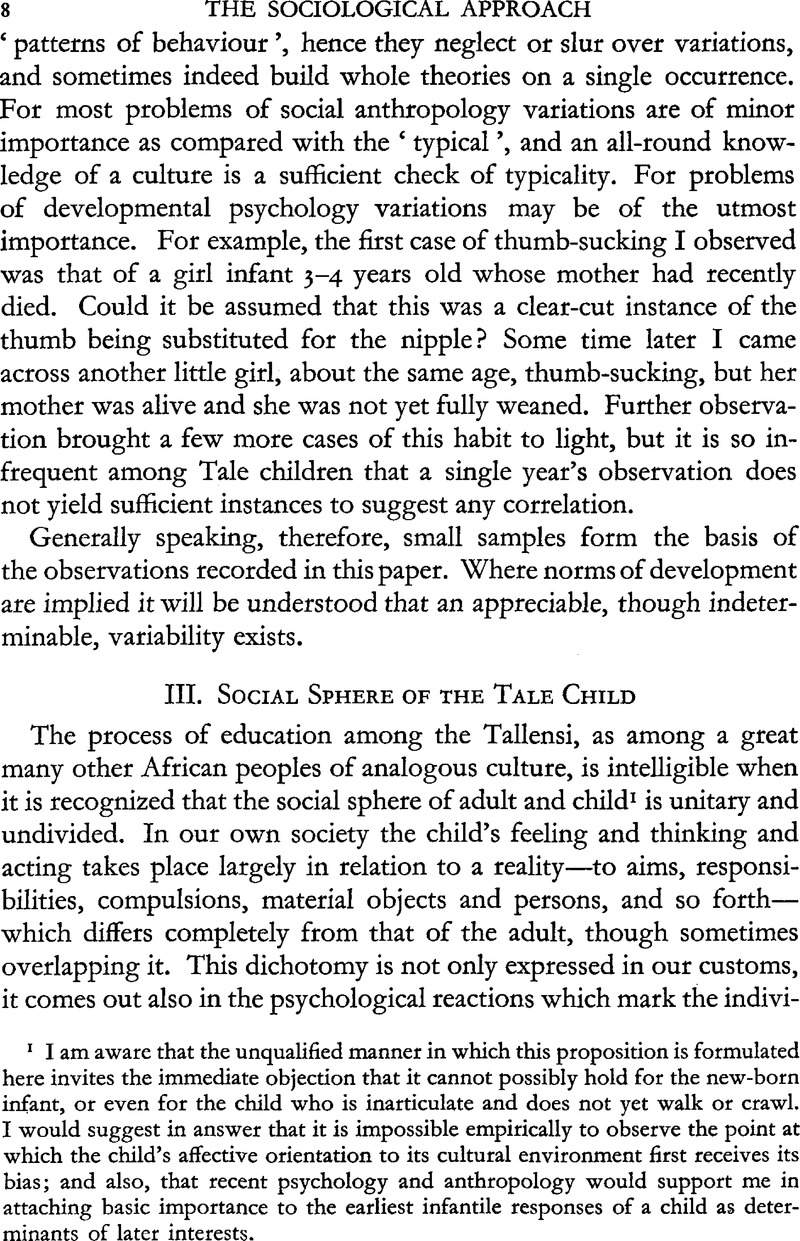No CrossRef data available.
Published online by Cambridge University Press: 21 August 2012

page 8 note 1 I am aware that the unqualified manner in which this proposition is formulated here invites the immediate objection that it cannot possibly hold for the new-born infant, or even for the child who is inarticulate and does not yet walk or crawl. I would suggest in answer that it is impossible empirically to observe the point at which the child's affective orientation to its cultural environment first receives its bias; and also, that recent psychology and anthropology would support me in attaching basic importance to the earliest infantile responses of a child as determinants of later interests.
page 9 note 1 See Murphy, G., Experimental Social Psychology, pp. 429–32Google Scholar, for a critical discussion of this question.
page 9 note 2 Cf. also Margaret Mead, Coming ofAge in Samoa.
page 10 note 1 See Fortes, M., ‘Ritual Festivals and Social Cohesion in the Hinterland of the Gold Coast’, American Anthropologist, vol. xxxviii, no. 4Google Scholar.
page 10 note 2 All ages are estimated, but the probable error of such an estimate is at least 12 months.
page 12 note 1 Kinship terms placed between inverted commas are translations of native terms, indicating classificatory kin.
page 13 note 1 He learns—u bamhra, cognate with bay, to know; I teach him—mpaanumi.
page 15 note 1 See Fortes, M., ‘Kinship, Incest and Exogamy in the Northern Territories of the Gold Coast’, in Custom is King, 1936Google Scholar , for ancillary information about these groups. Also , M. and Fortes, S. L., ‘Food in the Domestic Economy of the Tallensi“, Africa, ix, 1936,Google Scholar for an outline of their structural context.
page 17 note 1 This term is employed here for want of an apter one. It has been used in a different sense by Simmel and others.
page 18 note 1 A person's social space is not equivalent to the entire social structure since it is included in the latter, which is never fully known to or acted on by the individual. Take, for instance, the Tale joint family. As a structural unit it can be easily distinguished and described by the anthropologist; but each member's view of the whole is unique—that of the head of the joint family is different from that of his wife or son—yet all derived from the same single unit of structure.